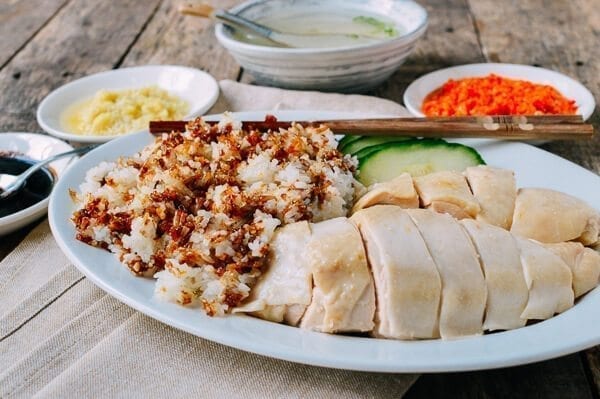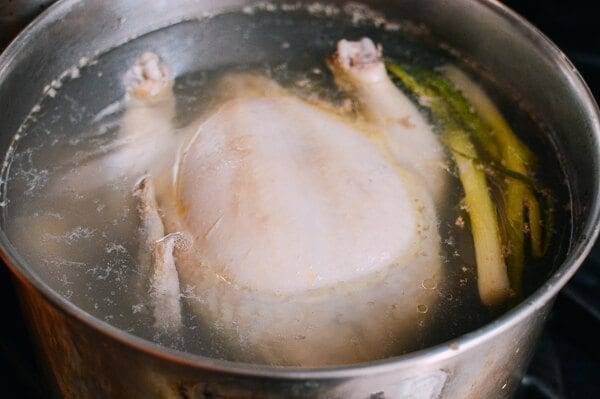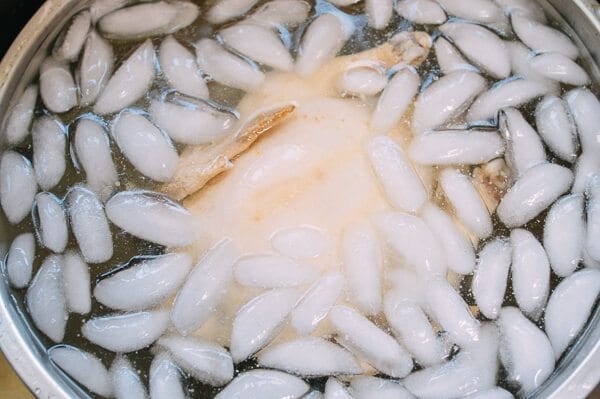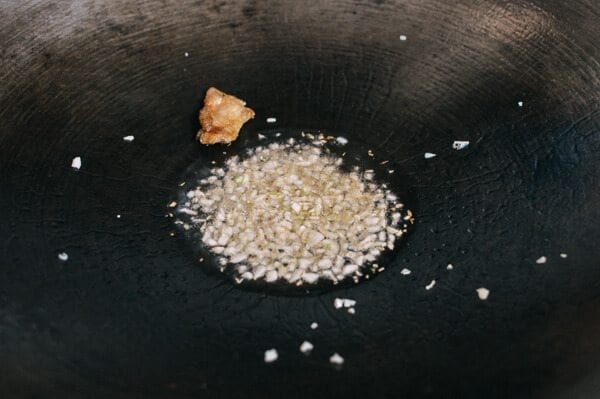Steamed pork ribs with black bean sauce
the photo is with rice. As you can see, it's a bit darker than the video because I also crushed the black beans. Very yummy and tender though
Note: I only rinsed for a few minutes and not the 11 minutes called for. I also just eyeballed the black beans. The meat however was very tender and the taste was spot on.
https://www.youtube.com/watch?v=ReIyBD3Ir88
https://www.reddit.com/r/Cooking/comments/8hw139/recipe_dim_sum_spareribs_%E8%B1%89%E6%B1%81%E8%92%B8%E6%8E%92%E9%AA%A8/
Ingredients:
One of the rare recipes we toss out where the vast majority of these ingredients can be sourced from a Western supermarket. The taro can be subbed with pumkin, and the one Chinese-food specific ingredient (douchi, black fermented soybeans) is really quite available online. And in a pinch, those fermented soybeans could even be skipped – the taste wouldn’t be the same but the dish’d still come out great.
St. Louis-style Spareribs (腩骨), 500g: Cleaved across the bone into 1.5-2cm pieces. This cut that we’re using is from the very bottom of the ribs – it’s basically the same as ‘St. Louis-style Spareribs’. You can also obviously just get a rack of spareribs and trim em yourself too.
Taro (芋头), ~500g. Cut into either 1.5-2 cm cubes or ‘diamonds’. The variety of Taro that we used is ‘Dasheen’, but either variety of taro should work great here. Because Taro takes longer to cook than ribs, we’ll be pre-frying this… if ya wanna skip that extra step feel free to use pumkin in its place.
Baking Soda (小苏打). Baked for one hour at 150 centigrade. We learned this technique from a ramen video by ‘Alex the French Guy Cooking’ (great channel by the way), and it makes a spot on sub for alkaline water. By baking the baking soda, you’re turning it into sodium carbonate – a stronger base with a pH of about 10.5-10.75. In the video, we baked 200g of baking soda total and jarred up the rest (we’ll definitely be using this stuff again). If you can source proper alkaline water, you obviously won't need the baking soda!
One liter of water mixed with one teaspoon of the baked baking soda -or- 10g of alkaline water if you can source it. To soak the ribs. The reason we can’t just use a higher concentration of baking soda is that pH is a logarithmic scale. Something with a pH of 11 isn’t just ~20% more basic than something with a pH of 9… it’s exponentially more basic. Full disclosure that I’m no chemist, but I’m pretty sure that our baked baking soda is somewhere between 31-56 times more basic than baking soda. Regardless… even if my understanding’s slightly off somewhere, we can confidently say that in our tests the baked baking soda gave a much better result in the end.
Marinade for the ribs: 1 large clove garlic minced, 1 tsp salt, ½ tbsp chicken boullion powder (鸡粉), 2 tbsp sugar, ½ tsp white pepper powder (白胡椒粉). This marinade’s more for flavor than texture – more on that in the notes below.
Douchi, Black Fermented Soybeans (豆豉), 10g. In the interest of convenience we’ll just be mixing this together with the ribs when marinating. Besides this ingredient, I know basically everything else in this recipe can be sourced in a well stocked Western supermarket… these guys’re available
on Amazon if ya don’t have access to an Asian grocer.
Coating for the ribs: 4 tbsp cornstarch (生粉), 1 tbsp peanut oil (花生油), ½ tbsp toasted sesame oil (麻油). So the cornstarch coating’ll give the ribs a nice soft texture, while also helping to absorb any excess moisture released while steaming. The oils help give the ribs some sheen. We use dry cornstarch so we don’t introduce too much moisture to the mix (some people use a slurry), so ya might need to add a small drizzle of water too if it’s clumping up on ya.
Optional garnish: a few slices of red and green mild chilis. You could also use a little julienned red and green bell pepper, or just skip it. As an aside, uh… don’t do what we did in the video and garnish before steaming – the green chili comes out pretty unattractive looking. We’ll talk about this more in the process below.
Process:
So right, the basic idea here is to prep the ribs by mimicking that washing machine. We’ll soak those ribs in the alkaline mixture, then we’ll rinse em under running water while stirring, and finally thoroughly spin em dry in a salad spinner. Once we do that, we can just marinate, coat, and steam.
Bake the baking soda at 150C for one hour. Now, no matter how much baking soda ya bake, you’ll definitely still get some excess – jar it up in an airtight container. Also, use gloves to handle the baking soda after baking… it’s not so basic that it’ll hurt you, but it could definitely cause skin irritation of you touch it.
Cut the ribs and the taro into 1.5-2 cm pieces. If ya don’t own a cleaver, you’ll prolly need to get the ribs from a butcher or an Asian grocer. For the taro, a bit more traditional is to cut it into a sort of ‘diamond’ shape (cut into strips and then on a bias), but either that or cubes are both ok.
Toss the cut ribs into a large bowl with one liter of water and one teaspoon of baked baking soda. Soak for 30 minutes. Stir it gently to make sure everything’s mixed. The basic liquid’ll both tenderize the ribs a bit while also helping to draw out the myoglobin from the ribs. After a half an hour, that water should really appear quite red if stirred.
Drain the water, put the bowl under running water, and stir for 12-15 minutes. In the interest of obsessiveness, we’re actually copying the ‘wash cycle’ here. Stir for a bit in one direction, then stir backwards. After 12-15 minutes, the ribs should look much paler and the water should run relatively clear.
Put in a salad spinner and spin for ~2 minutes. To mimic the dry cycle of course lol. The salad spinner’ll not only dry these guys, but the motion’ll help remove some of the remaining myoglobin. After about a minute of spinning, check the water – it should be a relatively pale pink. If it’s a darker red, give that one more rinse under running water for a minute and repeat. After two minutes of spinning, it should be dry enough to marinate.
Mix in the marinade, then toss in the douchi black fermented soybeans and combine well. Marinate for at least a half an hour and up to overnight. So that soak in the alkaline water did all the work we needed re texture, this marinade’s mostly for flavor. Because of that, there’s not much of an upper limit in marinade time – a half hour should be fine (for reference, in the video we let it go for about an hour), but overnight is also great. Whatever makes sense for your mise.
Fry the taro. If using pumpkin, you can skip this step. Restaurants deep fry the taro at a high temperature (i.e. 200C+) for about two minutes to prep it, but we opted for panfrying because I know we’re already being a bit annoying with all that rib prep. So add ~5 tbsp of oil to a wok (or cast iron or nonstick) and pan fry those cubes, tossing occasionally, for ~6 minutes. Then, up the heat to high and stir-fry for about a minute.
Coat the now-marinated ribs. Mix in that four tablespoons of cornstarch in with the ribs. Really to a bang up job mixing it, and word of warning that there’s a good chance it’ll clump on ya (whether it clumps or not’ll basically depend on how well you dried the ribs in step #5). If it does, add in a drizzle of water… really, no more than a half a tablespoon because we don’t want this to be too wet. Then add in the peanut and toasted sesame oils, and coat well.
Assemble the steaming trays. This recipe makes enough for six small bowls of ribs in total (really, opt for small bowls if at all possible) – should be enough to fit into two large bamboo steamers. Place a layer of taro at the bottom, then layer the ribs on top. For a touch of extra sheen, drizzle a tiny bit of extra peanut oil on top for good measure.
Steam for 15 minutes. The water should be at a hefty boil.
If garnishing… uncover, place a couple mild chilis/peppers on top, turn the heat down to low and lightly simmer for at least one minute or until you’re ready to eat. Dim Sum restaurants garnish in between the primary steam and placing it on the those steaming trays. Also, if you’re making other dishes to go with this, feel free to just let that keep lightly simmering/steaming at a low temp til you’re ready to serve.
Note on using a steaming rack:
So you can use a steaming tray with this too, but it might just be a touch of a headache to nestle in. Put some small bowls onto the steaming rack, and plate a saucer on top of the small bowl to seal it. It’s important to cover the bowls if using this method, as the steam can condense on your lid and drip down onto your dish.
Note on marinades:
So formally, there’s two separate things that we translate as ‘marinades’ in these recipes: shangjiang (上浆) and mawei (码味).
Shangjiang is a marinade that is used for texture – it most commonly uses cornstarch, but you can also see egg whites, baking soda, papain… etc. While we usually just refer to this as marinating, I’m 90% sure that the term ‘velveting’ is an English translation for shangjiang. (I haven’t really been able to find much on the etymology of velveting, unfortunately)
Mawei is a marinade that’s used for taste. An example would be to marinate fish pieces with ginger and liaojiu (Shaoxing wine) to remove the fishiness, or to marinate organ meat with white pepper and liaojiu to remove the gaminess. We used a mawei in this recipe.
In informal language, usually Chinese recipes simply use one verb (腌制) to refer to both. So I feel it’s less confusing to not differentiate em in English, cuz the word ‘marinate’ is similarly colloquial.





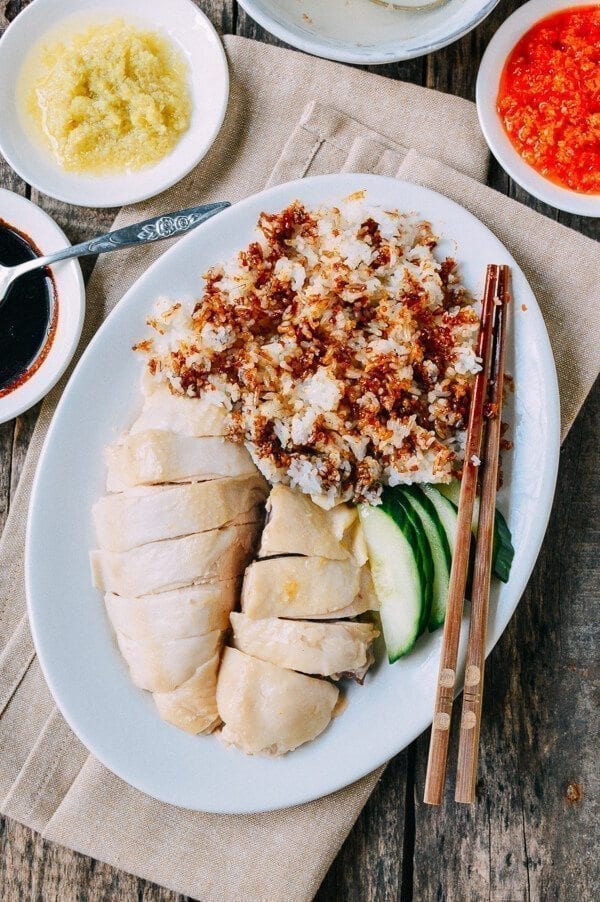 Hainanese Chicken Rice (海南鸡) originated––perhaps unsurprisingly––in Hainan, China, a tropical island located at the southern tip of the country. In recent years, it has become one of the top tourist destinations in China, probably due at least in part to the abundance of delicious plates of Hainanese chicken rice.
Hainanese Chicken Rice (海南鸡) originated––perhaps unsurprisingly––in Hainan, China, a tropical island located at the southern tip of the country. In recent years, it has become one of the top tourist destinations in China, probably due at least in part to the abundance of delicious plates of Hainanese chicken rice.
